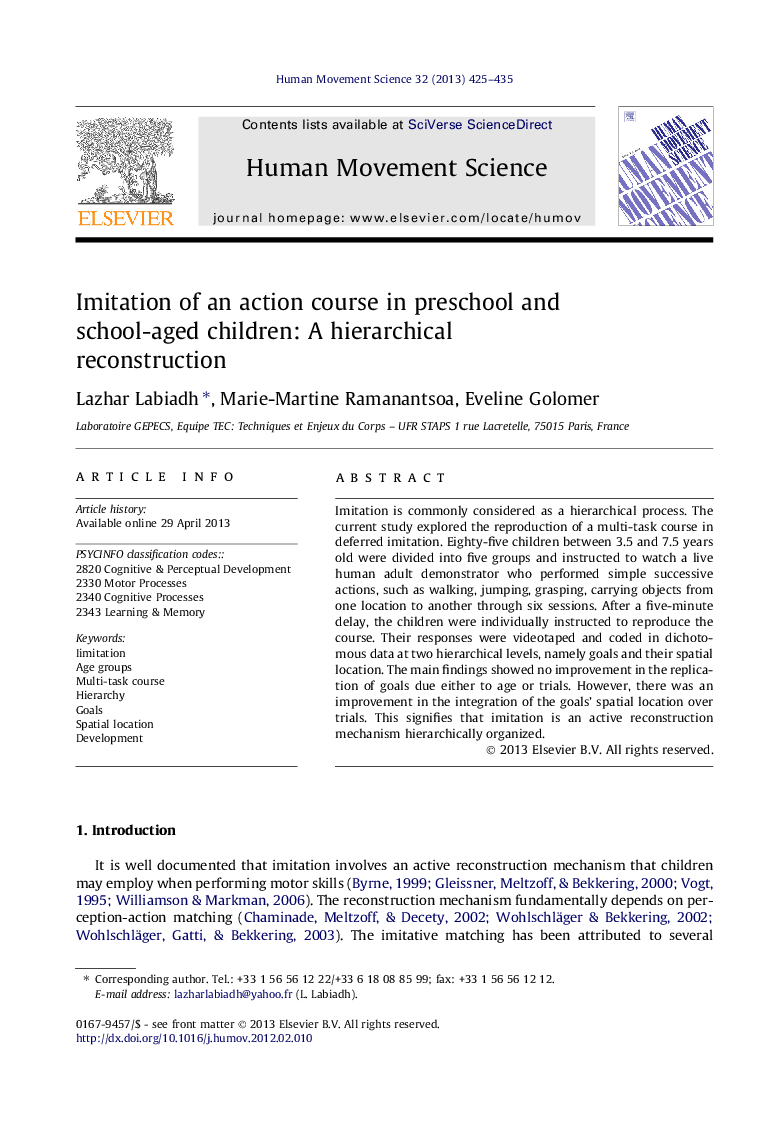| Article ID | Journal | Published Year | Pages | File Type |
|---|---|---|---|---|
| 928396 | Human Movement Science | 2013 | 11 Pages |
Imitation is commonly considered as a hierarchical process. The current study explored the reproduction of a multi-task course in deferred imitation. Eighty-five children between 3.5 and 7.5 years old were divided into five groups and instructed to watch a live human adult demonstrator who performed simple successive actions, such as walking, jumping, grasping, carrying objects from one location to another through six sessions. After a five-minute delay, the children were individually instructed to reproduce the course. Their responses were videotaped and coded in dichotomous data at two hierarchical levels, namely goals and their spatial location. The main findings showed no improvement in the replication of goals due either to age or trials. However, there was an improvement in the integration of the goals’ spatial location over trials. This signifies that imitation is an active reconstruction mechanism hierarchically organized.
► Imitation is defined as an association between observation and action. ► Two association types characterize the imitation: direct and complex. ► What information the children select to imitate successive actions with objects? ► Goal-directed action is imitated in priority. ► Sub-goals are included progressively according to the age.
